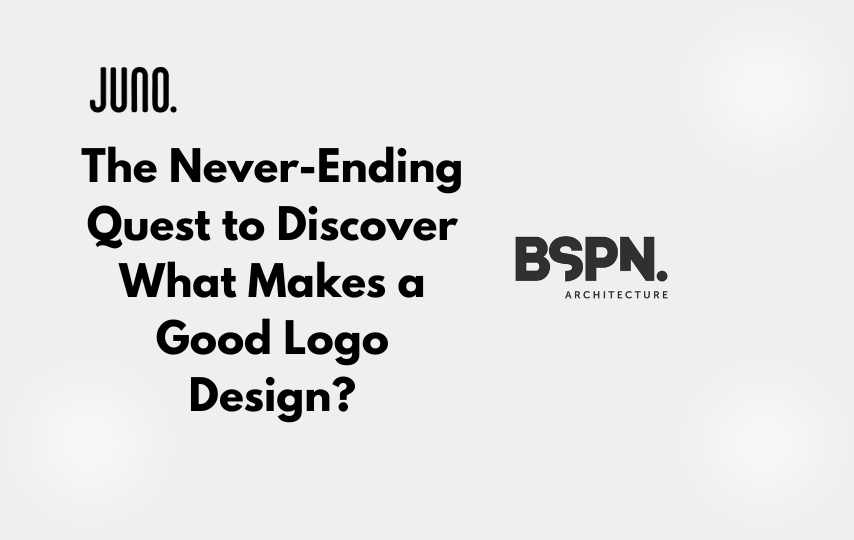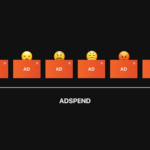A logo represents itself the personality of a company. Nowadays, it is free to choose a logo with different applications. You can design a meaningful, aesthetic, and professional logo with free logo designer applications. However, you should keep in mind simple rules to design a good logo for your company. Here are our suggestions for creating a decent logo, from the guidelines for employing handwritten typefaces to comprehending the value of balance and careful design. Let’s learn more in-depth about everything it takes to get a good logo.
What Is A Logo?
A logo is an escutcheon, a street sign, a signature, or a flag. The purpose of a logo is to identify, not to sell. Seldom is a logo used to describe a company. Rather than the other way around, a logo’s meaning is derived from the characteristics of the object it represents. The significance of a logo derives not from its aesthetic appeal but from its link with the item it stands for. A logo’s subject matter can be just about anything.
What Characterizes a Strong Logo?
A strong logo communicates the owner’s desired message and is recognizable, pertinent, usable, graphic, and in primary form. A good logo typically has a concept or “meaning” that conveys the necessary message. Any size and, in most situations, without color should be able to print a logo with no loss of effectiveness. A great logo is the result of two things; an excellent concept and an outstanding execution.
How to make a good logo?
These things are necessary to keep in mind while looking to make a good logo;
Explore conceptual icons
An icon is a condensed visual representation of your brand’s essence in logo design. It is a widespread misperception that your icon should be an illustration of what your product or service is. Even if certain firms might benefit from this, this is not necessarily the case for all of them. You can look at more conceptual (or even abstract) icons to highlight the work that your organization undertakes.
Evaluate handwritten fonts
One of the lead trends in logo design continues to be creative typography. Some of the best typefaces for logos, in particular, are handwritten fonts. Any consumer will be delighted by the quirky and genuine atmosphere they provide. Using handwritten typography as your tagline’s font has individual advantages. If you choose one of these font styles, you should take note of these logo design tips. Remember that employing capital letters frequently tarnishes the appearance of handwritten typefaces.
Color for logo
It’s critical to consider how you want people to feel when they view your colors because colors have a variety of effects on people. Also, colors need never be in opposition to the meaning you’re trying to portray. For instance, it might not be a good idea to employ dark hues, such as black or purple, if the focus of your brand identity is youth and enjoyment, as these could potentially evoke negative emotions in viewers.
Your slogan should be well-rounded
Let’s chat about your tagline. Making your tagline shorter than your name is a straightforward tip to follow to guarantee that your logo makes sense. For this reason, we advise sticking to no more than 25 to 30 characters. For the same reason, if you’re using a thicker font for your name, it’s advisable to choose a narrower (or more straightforward) one for your tagline.
Verify readability
The website header and business cards will both feature your logo as part of your branding strategy. Your content should always be readable wherever your logo appears. Check the final product on multiple platforms (Facebook, Twitter, Instagram, etc.), and from various devices, taking attention to the text size and font that you employ to ensure this (desktop, smartphone, tablet, etc.).
Size up your icon
The size of your icon affects the placement of various other elements of your logo. Never let your icon’s height be less than that of your text. You can adjust this by making your icon larger or even the same height as your text.
Give your background contrast
In keeping with the visibility idea, picking a background color that provides sufficient contrast for your text is another technique to ensure the logo is always “seen.” Using a background color like black if your text is white is a good choice.
Focus on your target audience
The finest branding appeals to a narrowly defined target demographic, not to everyone. A highly targeted image that is aimed at that target will establish a connection between the brand and the audience. The tone, channel, and message should be on the basis of the characteristics of the ideal target market for that company. Instead of concentrating on your style or preferences, think about the people you want to attract.
Create a positive perception
The perfect logo is successful in conveying a positive message to its clients clearly and quickly. However, it also represents the core values of the company.
In addition, a good logo should be easily adaptable to any brand touchpoints, including content, websites, social media, email, packaging, etc.
Spark a conversion
Both ocular and visual appeal is necessary for a successful logo. In other words, it must fulfill the most fundamental requirements, such as being recognizable and allowing for the easy interpretation of the straightforward notion associated with the venture or product it represents. Yet, people who take a closer look at things see things on a different level. Visual poetry is necessary because it can inspire dialogue and tales.
Create a positive perception
The mission and values of your firm should convey to your target audience with a strong logo. A good logo should be adaptable and easy to use across all brand touchpoints, including content, websites, social media, email, packaging, etc.
Wrapping up
These facts that we have discussed in this post are crucial to producing a good logo. If you want to create a good logo furthermore conveys your message to your customer and tells a story about your business, Juno creative can make it for you. Moreover, you can hire Logo Designer from Juno creative.







